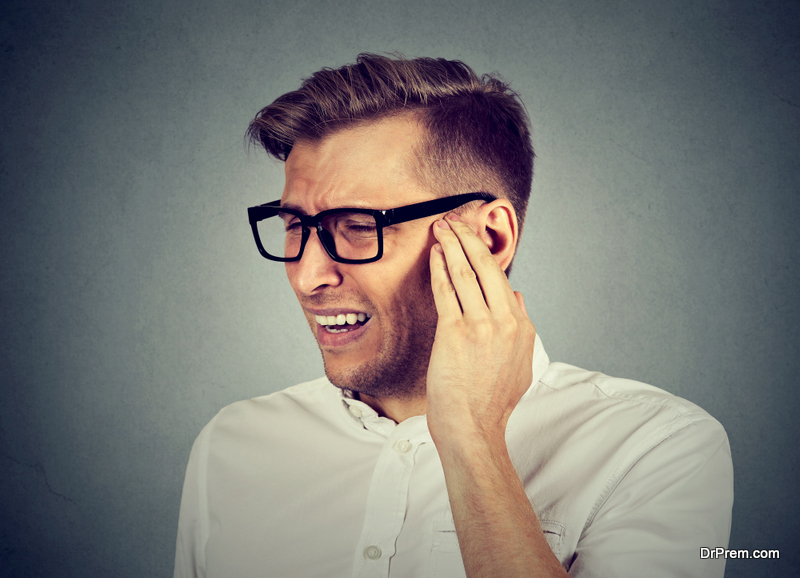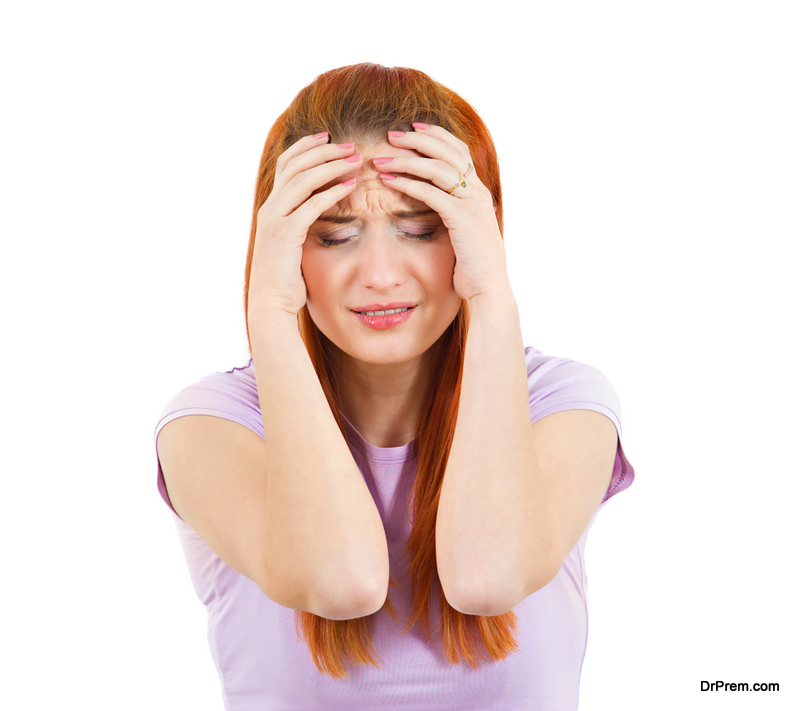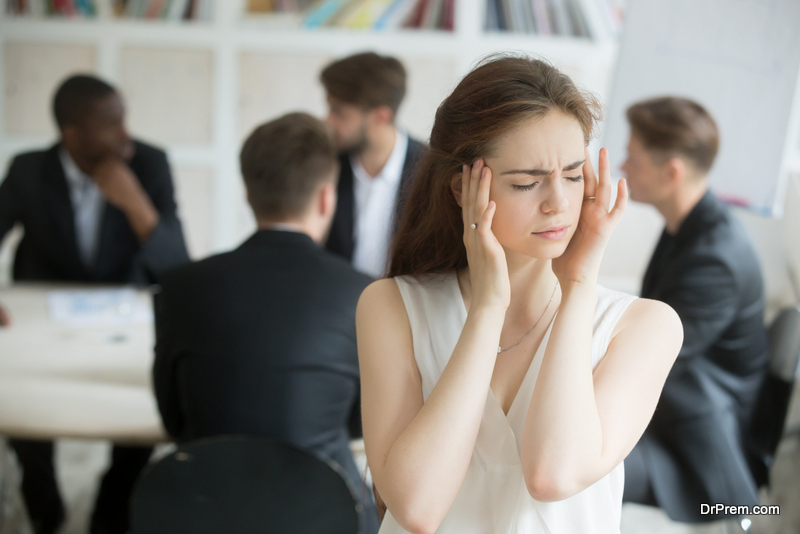Blurred vision. Crippling pain. Sensitivity light and sound. These are just a few symptoms of migraine headaches. More than 38 million people suffer from migraines of varying intensity. For some, the symptoms are mild and pass quickly. For others, they are debilitating and can last for hours to days. And not all migraines are treated equal. This article details the different symptoms associated with migraines, potential causes, and treatment options.
What Does a Migraine Feel Like?

Migraine-Headache-
While the answer to this question can vary from one person to the next, most migraines are described as a throbbing, pulsing pain often on one side of the head. Most migraines are also accompanied by other symptom including nausea, sensitivity to light and sound, fatigue, and blurred vision. Here is a more detailed breakdown of the specific symptoms associated with these intense headache.
Prior to the Headache
Some symptoms occur prior to the migraine headache actually attacking. These symptoms are known as the prodrome phase and may present themselves as early as 24 hours before you experience any pain. Some people experience severe mood swings or irritability, increased urination, fluid retention, and increased appetite and food cravings. In most migraine sufferers, their prodrome symptoms are the same every time. These are good indicators that a migraine is on its way, which helps people prepare.
Aura
Other precursors for a migraine headache include changes to your vision. This may include bright, flashing lights, dark spots, or zig-zag lines. These symptoms occur both prior to and during migraine headaches for some people. If you experience aura, avoid driving and limit screen time until your vision returns to normal. Sometimes, bright or flashing lights are what triggers aura, followed by a migraine, in some people.
After the Headache
When the pain of your migraine headache has finally passed, don’t be fooled into thinking you’re completely. For some, the symptoms continue. These are known as the postdrome phase and include feelings of confusion, weakness, and overall exhaustion. After all, having an intense headache for hours or days takes its toll on your body. Postdrome symptoms can last for several days following a migraine.
Who Gets Migraines?

Migraine-Headache-
No one is discluded from getting a migraine headache but some demographics are at greater risk. Migraines affect women more than men and some doctors believe there is a genetic link to migraines. If someone in your family has experienced migraines in the past, or still does, you may be at greater risk for suffering as well. Other underlying medical conditions can also trigger migraines in some people. These are often mental disorders and conditions including depression, anxiety, and bipolar disorder. Some people with epilepsy or sleep disorders like sleep apnea are also at risk.
Triggers
There’s no exact cause of a migraine headache and the possible triggers are expansive. No two people will likely experience the same type of migraine for the same reason. Aside from genetics, here is a list of some other reasons you may experience a migraine.
- Hormonal changes
- Smoking cigarettes or drinking alcohol
- Strong smells
- Bright lights or sounds
- Certain medications
- Anxiety/Stress
- Certain foods (aged cheese, yeast, fruits and nuts)
- Environmental changes
- Overexertion
- Allergies
Over time, most people learn their triggers and are able to avoid them. And others have clear signs each time a migraine is coming, helping them prepare and take action before the pain become too intense.
Treatment Options
Between medication, plenty of rest, and holistic approaches, people have found countless ways to both treat and prevent the onset of migraine headaches. Here are just a few.
1. Medications

Medication
One of the most common treatments for migraines is medication. This can range from over the counter pain relievers to prescription medications, depending on the severity of your condition. If you experience prodrome symptoms that indicate a migraine is coming, you can take medication right away to ease the pain of the headache. Triptan drugs and ergotamine are two popular types used to prevent and treat migraine symptoms.
The sooner you take these medications, the more likely they are to help. Some medical professionals actually prescribe antidepressant medications to treat migraine headaches. It’s believed that these medication directly affect the amount of serotonin released in the brain, which may prevent migraines, but more research is being done. It’s also believed that certain strains of CBD and THC may help ease migraine pain and discomfort. Visit now to learn more about the cultivation process and how it may help you.
2. Stress Reduction
Stress induced migraines are all too common, which is why reducing stress is a great way to prevent migraines. Stress management includes thing like exercise, meditation, yoga, journaling, and breathing exercises. Only you truly understand your own personal level of stress and how to help eliminate it. Some things can’t be helped, like work or the stress of finances. But you can take action to better handle these stressors and keep migraine headaches at bay.
3. Keep a Journal

Document what foods you eat
While journal writing won’t help your migraine pain go away, it can help prevent it from ever arriving. Document what foods you eat and what activities you participate in prior to your migraines. This will help you determine and avoid triggers. Journal for a few days to see if you recognize a pattern. Also, take note of which treatment methods work best so you remember them for next time.
4. Rest
If you can’t prevent your migraine from coming, you can at least treat it properly once it arrives. This includes plenty of rest and relaxation in a quiet, dark place. Because many migraines are triggered by sound and light, reducing these even after the migraine occurs can help reduce pain and additional symptoms. Try a cold or warm compress over your eyes or on your forehead, whichever feels best. Drinking lots of fluids can also help relieve symptoms.
5. Lifestyle Changes

Hormone therapy
One of the best ways to treat and prevent migraines is to adjust your lifestyle. This means reducing stress, exercising, and avoiding triggers. Obesity and excess weight are also connected to the onset of migraines, which means losing those extra pounds might reduce the number of headaches you get. Hormone therapy is another plausible option for migraine treatment and prevention if your a woman who’s migraines are linked to your menstrual cycle.
For migraine sufferers, understanding causes, triggers, and treatment options is crucial for living a normal, healthy life. Use this information to take control of your condition and manage your migraine pain and symptoms.
Article Submitted By Community Writer




